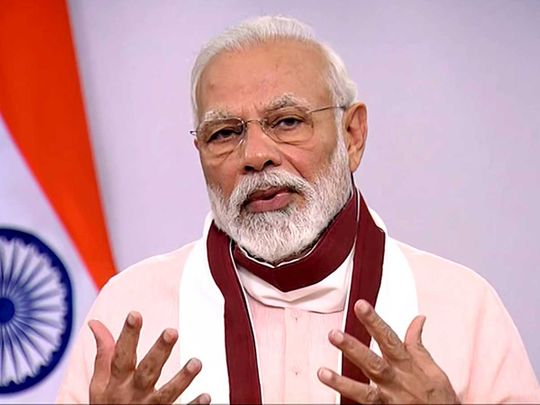
India plans to spend about 10% of its gross domestic product to stem the fallout of the coronavirus pandemic on Asia's third-largest economy.
The package totaling 20 trillion rupees ($265 billion) will help the economy get back on its feet after weeks of stay-at-home restrictions, Prime Minister Narendra Modi said in a televised address to the nation Tuesday. The finance minister will give details Wednesday onwards, he said. The figure announced by Modi includes some of the measures already unveiled by the government and the central bank.
"This economic package will be a crucial link in the creation of a self-reliant India," Modi said. Keeping that in mind provisions have been made in the economic package, he said.
122 million people lost their jobs in April
The spending plan coupled with tax breaks for new plants, and incentives for overseas companies is an attempt by Modi's administration to lure investors and stop the coronavirus pandemic from wrecking the economy. Asia's third-largest economy is hurtling toward its first full-year contraction in four decades. An estimated 122 million people lost their jobs in April while consumer demand has evaporated.
"The package is an announced intention with no details," said Nilanjan Mukhopadhyay, who has written Modi's biography. "The effort is to ensure that the attention is not so much on the virus but steps that the government is taking. The strategy seems to be to control the headline."
Modi has come under criticism on the pain inflicted on India's poor due to the sustained lockdown since March-end. In the past few days, the movement of millions of migrant workers from the cities where they had jobs to their homes in rural villages - and their reluctance to return - have dominated news.
Call for support measures
Companies have been urging the government for weeks to increase support measures. While Hero MotoCorp Ltd., India's top motorcycle maker, had sought a "suitable stimulus package," lobby group Associated Chambers of Commerce and Industry of India wanted at least a $300 billion package.
The announcement which came after market hours helped boost SGX Nifty futures, which rose 4%. Bond yields may rise on fears of a higher budget gap due to the economic package.
"The magnitude of the package is bigger than expected," Abhimanyu Sofat, head of research at IIFL Securities Ltd. "The funding of this huge amount is now the key focus and bonds may see sharp reaction."
The Reserve Bank of India last month injected more than $50 billion into India's economy, or over 3.2% of GDP.
Modi's latest announcement came a day after he met via video conference with state chief ministers. "We have a two-fold challenge - to reduce the transmission rate of the disease, and to increase public activity gradually, while adhering to all the guidelines," Modi said in a statement on Monday after the meeting.
Fourth phase of lockdown
The country will enter the fourth phase of a lockdown with new rules which will be announced by May 18, Modi said on Tuesday.
By opening more of the economy while continuing to lock down Covid-19 hot spots, the government hopes to ease the economic impact of the world's biggest lockdown, which has crippled business activity and left millions jobless.
Elsewhere
Elsewhere in the region, Australia's government and central bank unleashed a massive shot of fiscal and monetary stimulus worth A$189 billion - equivalent to 9.7% of the country's gross domestic product. Singapore, by comparison, last week announced a third stimulus package in two months, taking the nation's total virus relief to almost S$60 billion, or 12% of gross domestic product.
Infections are surging across the South Asian nation of 1.3 billion people, with number of confirmed cases nearly doubling since the beginning of May to 71,441 cases, including 2,310 deaths, according to data from Johns Hopkins University.
India reopens economy but millions of workers stay home
India has been under a stringent nationwide lockdown since March 25, even though some restrictions were eased on April 20 to allow farmers and industries to resume operations in rural areas and in districts that were free of infections. The lockdown was scheduled to end on May 17.
Still, companies are facing difficulties reopening factories - primarily because of travel restrictions, conflicting rules, broken supply chains and a shortage of workers.
The country meanwhile has started running special trains to take stranded workers to their homes. Indian Railways also partially resumed passenger train operations from Tuesday, nearly two months after the services were stopped.








